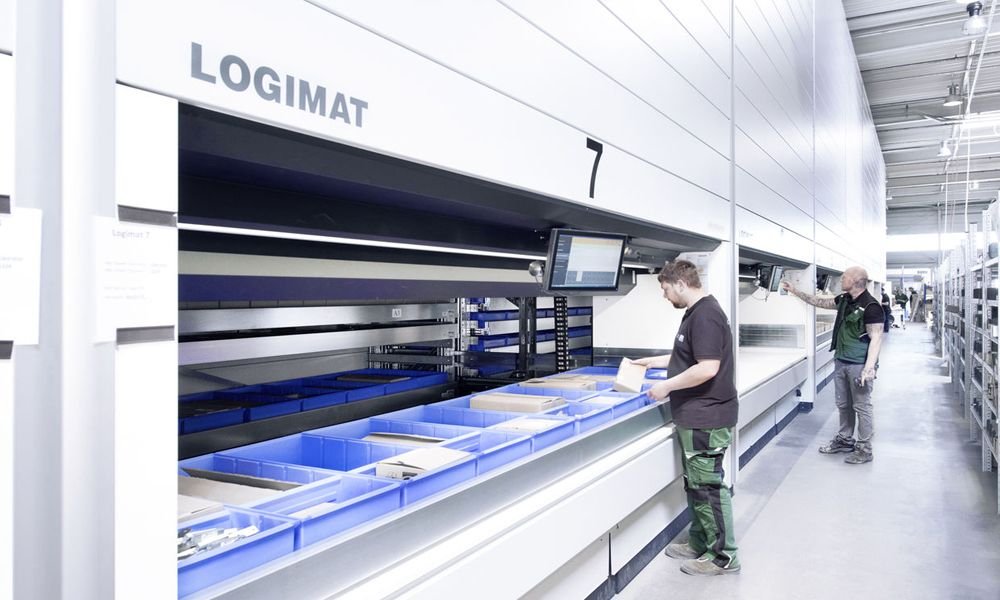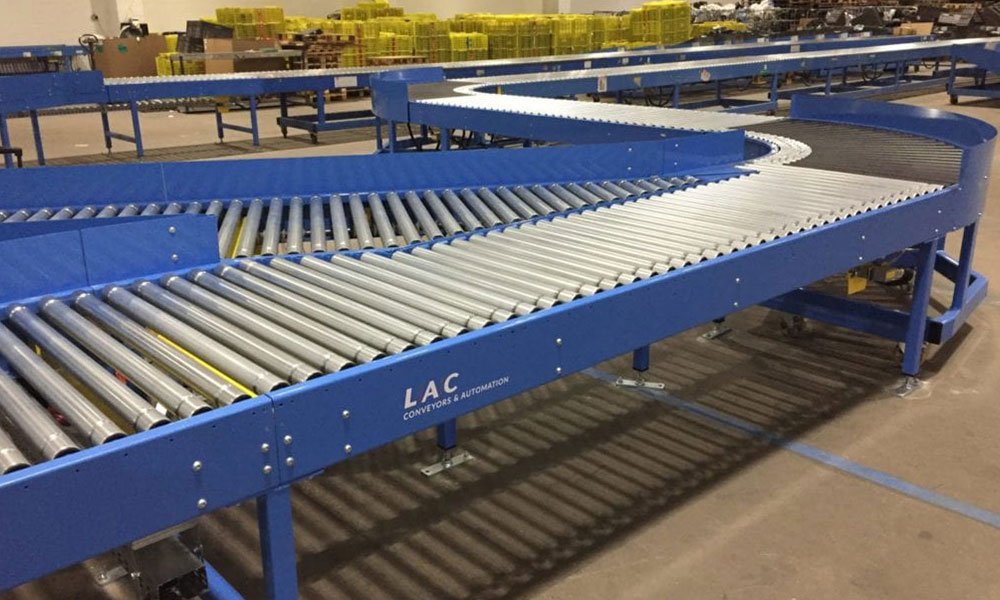Roller conveyors are a series of rollers supported within a frame where objects can be moved either manually, by gravity, or by power.
There is a wide range of ways roller conveyors can be used and modified for different uses including transporting boxes, cardboard boxes, crates, pallets, plastic totes, polybags, slave boards, and trays.
A roller conveyor system can be configured to work with a range of ancillary equipment including bends, gates, and turntables.
Roller conveyors are normally used in environments such as warehouses or manufacturing facilities due to the nature of transporting goods.
Using a roller conveyor can add versatility to the type of transfers, diverters, and stops that can be used as part of a conveyor system or automation system. You can get roller conveyors in mild steel, galvanized, plastic, or stainless steel.
Where did roller conveyors come from?
The first patent for roller conveyors was awarded in 1908 to Hymie Goddard, from Logan Company, in Indiana. This allowed for smooth transport of goods by means of internal ball bearings, although the conveyor did not get mainstream until five years later.
In 1913 Henry Ford made a milestone in history by introducing the renowned assembly line.
During the 1920s conveyor solutions started being used for longer distances thanks to a conveyor being able to carry heavier and larger goods over long distances with much more ease.
It was due to World War 2 and the lack of raw materials that the technology improved and is the reason why today roller conveyors can be used from materials including synthetic fabrics and polymers. This also reduced the cost of upkeep on the roller conveyor system.
Starting in the 70s up to now, conveyor systems including the roller conveyor, have witnessed developments to their technologies and innovations from introducing and perfecting power conveyors through to using computers to control complex applications. There are consistently new variations to the conveyor systems to keep the industry in motion, all with the goal to reduce time and increase optimal performance.
What industries are roller conveyors used in?
Roller conveyor systems, due to their adaptability and usage, are used widely in numerous industries, predominately logistics and manufacturing. There are several industries roller conveyors are used in including the examples listed below:
- Food handling
- Packaging
- Logistics
- Mail delivery services
- Baggage handling
- Steelmaking
- Manufacturing and design
- Roller conveyors
What are the benefits of using gravity roller conveyors?
Gravity roller conveyors are useful as they use gravity’s force to move items. Putting your gravity roller conveyor on a decline angle means you can move a product without any power source. This is a cost-benefit as it means it doesn’t require any power to move the goods from A to B, giving a reduced cost and being more environmentally friendly compared to a powered roller conveyor.
Due to not requiring any power, this reduces the need for maintenance costs, so again, reduces the cost of operation and time in maintaining the conveyor.
However, a gravity roller conveyor may not be as best suited in some scenarios as a powered roller conveyor would be.
This is due to it being harder to control the conveyor speed which could result in goods being damaged, for example, if the conveyor decline is steep and a heavy item gets put on the system.
What are the benefits of using a powered roller conveyor?
When you need to transport goods over a longer distance, a powered roller conveyor is likely the most suitable product.
Due to being powered systems, they can move goods horizontally over a long distance within an efficient time.
The speed can be controlled so there is full control over the process, and this helps reduce risk due to full control.
A powered roller conveyor has the benefit of being able to handle heavier loads, a reason why they are commonly used in the manufacturing industry.
The powered roller conveyor system can be split up into zones meaning that each zone can be individually controlled which allows each zone to only run when an item is present helping in reducing cost and improving efficiency.
This, again, reduces risk as if a motor breaks or the power supply to one zone has stopped, only that zone will stop and the remainder of the system can carry on.
These systems are more expensive but are worth the investment if you need to move goods over a longer distance. You can see in the image below a roller conveyor system L.A.C. installed where one part of the conveyor system takes the product up and down, reducing the need for people on the system and automating a process.





